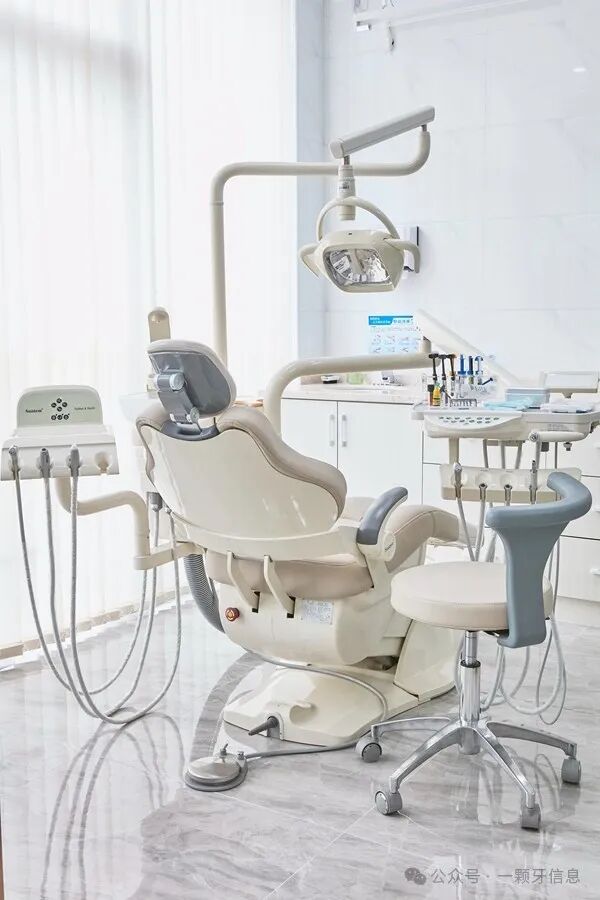In dental restoration treatments, temporary crowns play a crucial role in protecting the abutment teeth, maintaining oral function, and aesthetics. The 3D printing equipment for temporary crowns provides an efficient, precise, and personalized solution for their production.

1. Working Principle of the EquipmentThe 3D printing equipment for temporary crowns mainly relies on 3D printing technologies such as Stereolithography (SLA), Digital Light Processing (DLP), or Fused Deposition Modeling (FDM). Taking Stereolithography technology as an example, the device has a liftable platform above a vat containing liquid photopolymer resin. During the printing process, ultraviolet light projects the cross-sectional pattern of the pre-designed 3D model of the temporary crown layer by layer, causing the liquid resin to cure rapidly. The platform descends by a specific height (layer thickness) each time, allowing a new layer of resin to cover the previously cured layer, and through layer-by-layer curing accumulation, a complete temporary crown is formed.Digital Light Processing technology is similar but uses Digital Micromirror Devices (DMD) to control the projection of light, curing an entire layer pattern at once, significantly increasing printing speed. Fused Deposition Modeling technology involves heating and melting filamentous thermoplastic material, which is extruded through a nozzle and layered according to the model path to form the temporary crown.2. Key Advantages of the Equipment1. Rapid Production: Compared to traditional methods of making temporary crowns, such as manually creating wax patterns followed by casting, 3D printing equipment can significantly shorten production time. From obtaining oral model data to completing the printing of the temporary crown, it typically takes only a few dozen minutes, greatly improving work efficiency, especially for patients who urgently need temporary crowns.2. High Customization: After obtaining precise data of the patient’s oral cavity through scanning, the temporary crown model can be customized in Computer-Aided Design (CAD) software based on the patient’s tooth morphology and occlusion. The 3D printing equipment can accurately reproduce the design model, producing personalized temporary crowns that fit the patient’s mouth, ensuring comfort while meeting aesthetic requirements.3. Good Precision and Quality: 3D printing technology can achieve high precision, with the produced temporary crowns having accurate dimensions and good edge fit, effectively protecting the abutment teeth and reducing food debris accumulation and bacterial growth. Moreover, the printed temporary crowns have smooth surfaces and require minimal post-processing to meet clinical use standards.
3. Equipment Composition and Key Components1. 3D Printing Main Unit: This is the core part of the equipment, responsible for executing the printing tasks. Depending on the printing technology used, the internal structure of the main unit varies. For SLA units, it includes a high-precision UV light source, a precisely controllable lift platform, and a vat containing resin material. The stability and precision of the printing unit directly affect the quality of the temporary crown printed.2. Control System: This system controls the printing process, including setting printing parameters (such as layer thickness, printing speed, exposure time, etc.), importing temporary crown model data, and monitoring printing progress. An advanced control system has intelligent features that can automatically detect and correct deviations that may occur during printing, ensuring smooth operation.3. Material Supply System: The material supply method varies depending on the printing technology. SLA equipment is equipped with resin storage and delivery devices to ensure a continuous and stable supply of resin material to the printing area; FDM equipment has filament spools and feeding mechanisms to ensure uniform and smooth extrusion of the material. The stability of the material supply system is crucial for the consistency of the temporary crown’s quality.4. Applicable Materials1. Photopolymer Resin Materials: These materials are commonly used for 3D printing temporary crowns due to their fast curing speed and high forming precision. Such resins typically have good biocompatibility, low irritation to oral tissues, and can simulate the color of natural teeth by adding different pigments to meet aesthetic needs.2. Thermoplastic Materials: Such as Polylactic Acid (PLA), commonly used in FDM printing technology. Thermoplastic materials are relatively low-cost, have certain strength and toughness, and can meet the short-term usage requirements of temporary crowns. Additionally, they have good processing performance and are easy to print.
5. Operating Process1. Oral Data Acquisition: Use an oral scanner or CBCT device to obtain the patient’s three-dimensional oral data, accurately recording the morphology of the abutment teeth and surrounding tissues.2. Temporary Crown Design: Import the acquired oral data into CAD software to design a three-dimensional model of the temporary crown based on the patient’s oral condition, occlusion, and aesthetic requirements. During the design process, adjustments can be made to the shape, thickness, and internal structure of the temporary crown.3. Model Import and Printing Parameter Settings: Import the designed temporary crown model into the control system of the 3D printing device, and set appropriate printing parameters such as layer thickness, printing speed, and temperature (for FDM technology) based on the selected materials and printing technology.4. 3D Printing: Start the printing device, which will print the temporary crown layer by layer according to the preset parameters. During the printing process, operators need to closely monitor the printing status to ensure smooth operation.5. Post-Processing: After printing is complete, remove the temporary crown and perform necessary post-processing. For temporary crowns printed with photopolymer resin, secondary curing, cleaning, and polishing may be required to improve surface quality and precision. The post-processed temporary crown can then be delivered to the patient for use.
